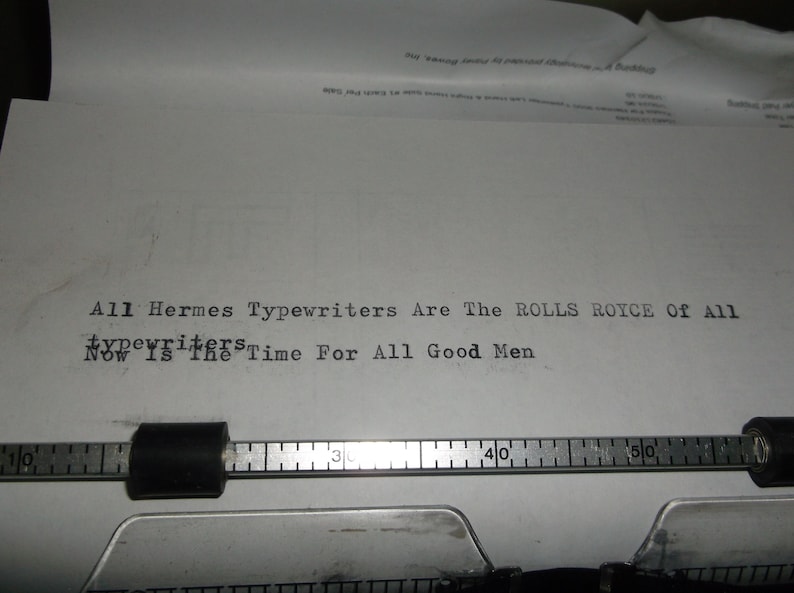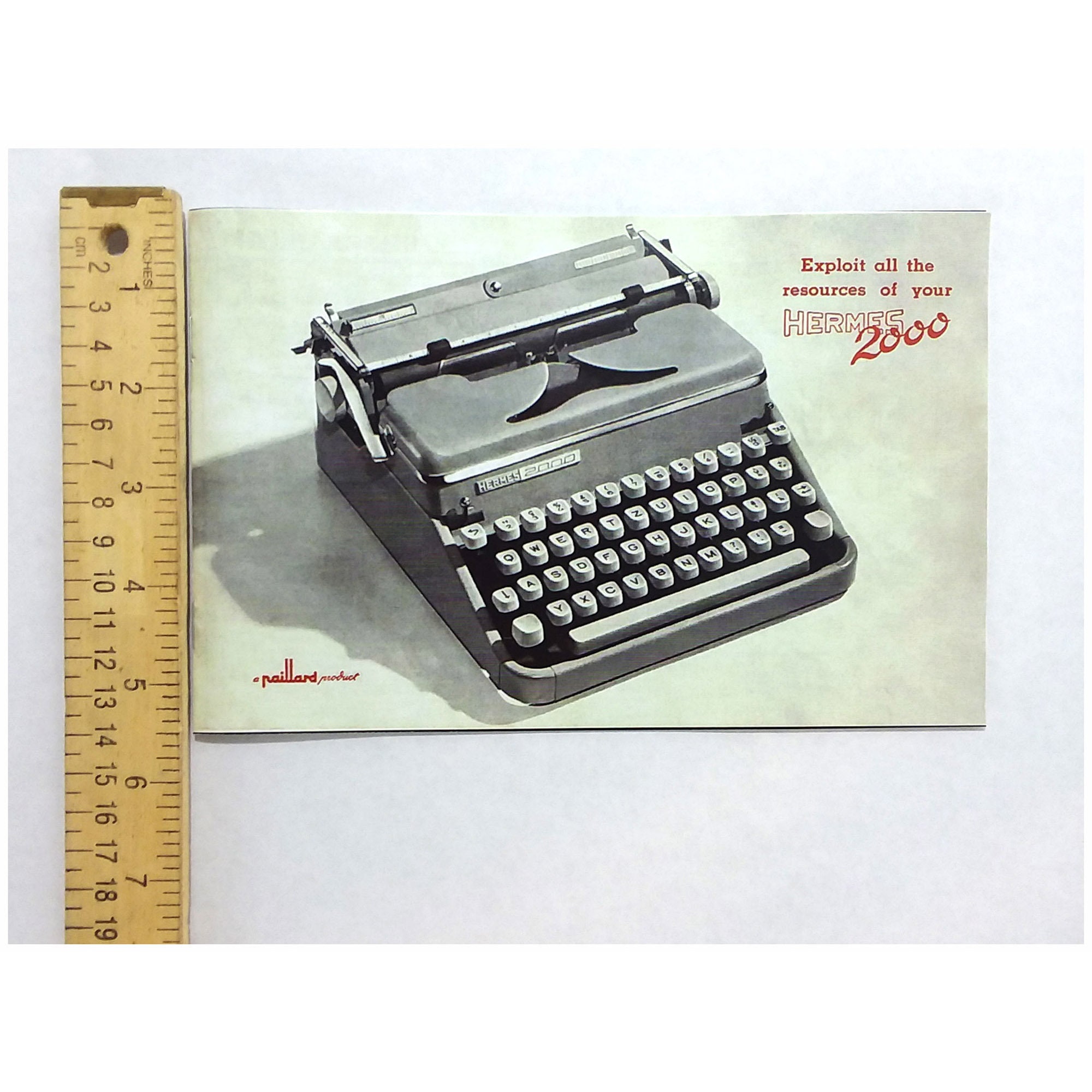

"But with a typewriter you don't have the Internet, which can be very distracting. "The typewriter does make you more decisive because it's harder to change things," he says. Polt uses both computers and typewriters, he says, and isn't surprised that McMurtry - and even a few young whippersnappers - are entranced with typewriters, despite the difficulty of correcting one's work. Richard Polt, a philosophy professor at Xavier University in Cincinnati who edits ETCetera - staff.xu.edu/ (tilde) polt/typewriters/etc.html - an online magazine for typewriter fans, says the Hermes 3000 has "a very good reputation." He doesn't own one, preferring heavier, blockier typewriter styles from the 1930s and '40s, but he can see the appeal. Among them were the Hermes Media in 1936 Hermes 2000 in 1939, featuring the first automatic margins the Hermes Baby Jubilee in 1940 and, in 1958, the Hermes 3000 - a typewriter that many revere as the most luscious ever created, a dream machine that came in such spiffy colors as minty green or lustrous ivory. Then came a succession of Hermes models, each sleeker and more innovative than the next.
#Hermes 2000 manual portable#
Paillard's first portable typewriter, the Hermes 2000, was launched in 1933, followed by the Hermes Baby in 1935. Later, Paillard would make cameras and calculators as well.

They were dubbed Hermes, after the Greek mythological character who served as messenger to the gods. By 1900, according to several books chronicling typewriter history, the firm had moved on to radios and record players by 1920, typewriters were rolling out of the factory at Yverdon. The Hermes was created by the Paillard company, which started out making music boxes in the early 19th Century. Earlier models, he notes, came with an aluminum lid. /rebates/&252fhermes-2000-manual. Williams, who owns 44 typewriters and works as a musician and piano tuner, has only one complaint: the lid for his Hermes 3000 is made of plastic. It's one of those machines that never skips a space." "The contact of the type bar against the paper is really solid. Williams wants it clearly understood, though, that it's more than mere superficial beauty that draws him to the Hermes 3000, one of which his parents bought for him new in August 1960 - he rattles off the month and year without a hitch - after first making him suffer through a used Royal portable. The Hermes 2000 was introduced in the 1930s, so perhaps 2000 made it sound like a machine that was decades ahead of its time. It's got big buttons, like the buttons on the dashboards of cars in the early '50s," he says. "It had to have been designed by somebody who likes cars - big, curvy cars.

Williams, who is blind, knows the Hermes 3000 by its inimitably sleek feel. "It's such a cool machine," he says of the Hermes 3000, a Swiss-made typewriter first introduced in 1958 that sports nicely rounded corners and a nifty lid that snaps down over the machine onto a base upon which the typewriter sits. Jay Williams, who lives in Port Angeles, Wash., heartily seconds that.


 0 kommentar(er)
0 kommentar(er)
